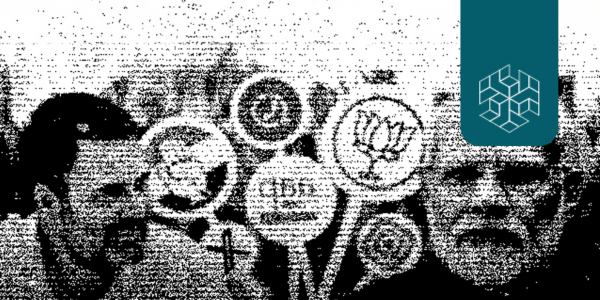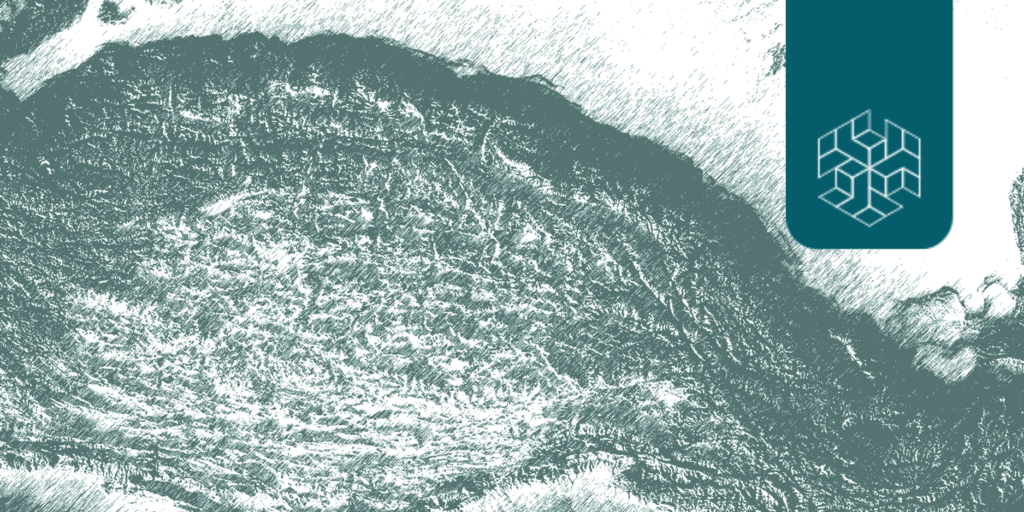Author – Anusha Arif
Abstract
For India, a nation grappling with a rapidly growing population, urbanisation and environmental degradation, water conservation is a critical priority. Current data stresses India’s need to strengthen its conservation tactics and policies to tackle the upcoming challenge of water scarcity in the country. This paper looks at the current state of water bodies and rivers in India, reviewing existing policies, reports and conservation efforts. It explores the importance of safe water availability and its resultant health implications. Moreover, it examines the amendments under the Water Conservation Amendment in 2024 and the implications it can have on the future of water in the country.
Introduction
In 2022, India overtook China as the country with the world’s largest population, which is also set to continue growing in the coming decades. With over 1.43 hundred crore people in the country, the demand for water for domestic, agricultural and industrial purposes is escalating. A study by the Central Water Commission on the ‘Reassessment of Water Availability in India using Space Inputs in 2019’ revealed that the average annual per capita water availability for the years 2021 and 2031 stands at an assessment of 1486 cubic metres and 1367 cubic metres, respectively (PIB, 2022a). Based on this data, India can already be considered water-stressed and may be heading towards water scarcity over the next three decades based on current decline.

India’s rapidly expanding urban areas have also exacted a huge toll on its water bodies, especially its rivers, which are now choked by large-scale developments. The issues with regards to water in India are multiple, including conservation, encroachment, pollution of lakes and rivers, depletion of ground-water levels and the growing health impacts of unsafe water.
Despite various legislations, the flow of untreated or partially treated wastewater remains a daunting challenge in the country. According to the Central Pollution Control Board (CPCB), 61 per cent of urban sewage from domestic and commercial sources is discharged into rivers and other water bodies without treatment (Gupta, 2023).
The plight remains the same even for major rivers like the Ganga and Yamuna, which hold a spiritual meaning for the people of the country. The Ganga is, in fact, one of the most polluted rivers in the world, receiving more than 4000 septic trucks full of sludge and untreated waste along with its tributaries. The government has, through various policies and interventions, attempted to control the excess water contamination issue; however, much of these developments remain rather futile. Since 2016, the percentage of untreated sewage discharged into the rivers has only decreased by two per cent (Dev, 2016). At a time when the country should be able to expand its water resources to meet the growing demand, it is struggling to maintain clean rivers and water bodies.
Overview of the Current Situation
Amongst the traditional water bodies, including wetlands, lakes and inland watercourses, nearly 70 per cent of all surface-level water bodies are estimated to be exposed to high levels of pollution (ADRI, n.d).
India has four broad categorisations of rivers, including Himalayan rivers, Deccan rivers, coastal rivers and rivers of the inland drainage basin, and as many as 12 major rivers. It is also home to over 15000 natural lakes and many other man-made lakes. However, the high pollution levels in these major water bodies have made the water non-consumable. The change in weather patterns threatens many others.
India, which has only 4% of the world’s freshwater resources despite having 16% of the world population (Pandey, 2023), has witnessed some concerning phenomena in recent times.
Table 1. Overview of Recorded Trends on Encroachment and Drying of Indian Water Bodies
| Study | Relevant Findings |
| Sundararaju, 2019 | Out of nearly two dozen water bodies and wetlands that existed in the city of Chennai, only nine remain. |
| Sentinel, 2023 | Through satellite observations, it has been discovered that between 1992-2020, more than 30 large freshwater lakes in India have recorded a drying trend. All over the world, ninety thousand square kilometres of permanent water sources have been lost. |
| Kaggere, 2023 | Karnataka experienced a loss of 13,489 water bodies between 2021-2022.
According to the first-ever census of water bodies in the country by the Union Jal Shakti ministry, 78.2% of the total water bodies in the state have either dried up or have been irreparably destroyed. |
| GOI, 2023 | The data revealed that nearly 38,496 water bodies in India have reportedly been encroached.
Out of the total surveyed water bodies, it was found that nearly 78% are man-made and only the other remaining 22% are natural water bodies |
Specifically for the water quality of rivers, an analysis by the CPCB in 2023 of 603 rivers in 1920 locations all over the country identified 311 polluted river stretches in 30 states/UTs (PIB, 2023). The high levels of river pollution have also reportedly contributed to major health issues in different parts of the country. Reports from rural areas in Uttar Pradesh, such as the Gangnauli village in Bhagpat district through which the polluted Krishna River flows, point to the escalating health issues of riverine pollution (Ali, 2022). Waterborne diseases that have led to stunted growth, autoimmune diseases, bone deformity and even cancer have become more prevalent. In 2017, the National Green Tribunal confirmed that water was indeed the cause of the mass sickness in villages across five districts in western Uttar Pradesh (Ali, 2022). The rural areas remained exposed to polluted water for a more extended period due to infrastructural deficiencies and the unavailability of safe piped drinking water.
Current Policy Landscape
Water has remained a source of primary concern for the government policies and interventions especially considering the multitude of challenges faced in the sector. Thus, the policy landscape is a cobweb of interlinked policies on river action, water conservation measures and other pollution control measures.
The ground basis of all policies and measures is found in the Constitution of India, which has further been aided by the important legislations for environmental protection. The Water (Prevention and Control of Pollution) Act, 1974 (hereinafter referred to as the Water Act) is the principal act which aims to prevent water pollution and cater to the maintenance of the water bodies, promoting activities for the restoration of water. The Water Prevention and Control of Pollution Cess Act was further introduced in 2003 for the collection of a cess on water consumed by persons carrying on certain industries and by local authorities. The regulation of industrial pollution is implemented through various provisions of the Water Act under a consent mechanism by the respective State Pollution Control Board (SPCB) and the Pollution Control Committee (PCC). The Act also imposes certain punitive measures, such as a term of up to six years and a fine for the disposing of polluting matter in streams and wells.
However, despite expansive policies, the government has not been able to achieve much success in reviving or protecting the water bodies in the country.
Even then, many illegal industrial operations, such as dyeing units, etc, have continued to release untreated wastewater in rivers. The industrial units must drain their waste to an effluent channel that takes it to a common effluent treatment plant (CETP) and followed by a domestic sewage treatment plan (STP); however, many industrial units have failed to comply with the policies. In 2021, the Ahmedabad Municipal Corporation disconnected 33 drainage lines that discharged toxic industrial effluents in the Sabarmati rivers (TNN, 2021). The state of many other rivers remains the same. Hindon River, which is the main tributary of the Yamuna River and passes through major districts in Uttar Pradesh, was declared a ‘dead river’ in 2015 by the CPCB (Jha, 2023).
The government started the river pollution abatement programme through a National River Conservation Plan (NRCP) in 1985 (GOI, n.d). Over the last four decades, many phases of the Ganga Action Plan and renewed plans specifically for the Ganga and Yamuna have been forwarded.
From its last update in early 2023, the NRCP covers 36 rivers in 80 towns (PIB, 2023) across the country and included pollution abatement through the setting up of sewage treatment plants (STPs), construction of low-cost sanitation toilets to prevent open defecation on river banks, riverfront development works, etc. (GOI, n.d). In addition to this, sewerage infrastructure is cleared under programs such as the Atal Mission for Rejuvenation and Urban Transformation (AMRUT) and Smart Cities Mission of Ministry of Housing and Urban Affairs (PIB, 2023).
Focusing on the Ganga, the government approved a flagship programme in June 2014 with an outlay budget of INR 20,000 to accomplish the goals of effective abatement of pollution and rejuvenation of the river (NMCG, 2020). However, the progress of the mission has been very slow. Till 2023, seven years after the ambitious project was launched, the treatment plans installed have only a capacity of 20% of the sewage estimated to be generated in the five major states along the river (Koshy, 2023). Most recently, the NGT took cognizance of the matter and ordered the Uttarakhand Pollution Control Board (UKPCB) to take punitive measures against the discharging of untreated sewage in the Ganga River (Mishra, 2024). It found that only half of the 700 million litres of sewage generated daily (MLD) was being treated properly before release (Mishra, 2024).
Other provisions for water conservation in India are also found under schemes such as the Atal Bhujal Yojana, Pradhan Mantri Sinchayee Yojana, Model Building Bye-Laws and other guidelines for urban development (PIB, 2022b).
Implications of the Water Conservation Amendment Bill and Recommendations
The Parliament passed the Water (Prevention and Control of Pollution) Amendment Bill in 2024 to enhance water conservation practice and pollution control measures. Some of the key features of the new act include:
I. Decriminalisation of certain offences: In a pivotal shift, the government has amended the 1974 Water Act which made punitive provisions for certain violations, such as operating an industry without a valid operating licence, which was punishable with imprisonment up to six years. The new amended act has decriminalised several violations and replaced them with financial penalties, ranging from INR 10,000 to INR 15 lakh.
The government’s approach now focuses on a more civil compliance mechanism through disincentives rather than criminal prosecution which may affect operations by industries that can get away more effectively by paying a fine.
II. Exemptions for Industries: The new Act also introduces the Union government’s power to allow certain categories of industrial plants to obtain prior consent for establishment. It mandates that this power should be exercised in consultation with the CPCB. The earlier Act required industries to obtain consent from the State Pollution Control Board (SPCB) for the establishment and operation of any industry and treatment plants.
The government specifies that this move is made to promote economic development; however, it can be a thin line to tread in maintaining the balance between economic growth and environmental protection.
III. Increase in penalties and Adjudication: In the new Act, the government has moved to impose more hefty penalties for the discharge of polluting matter into water bodies. The Act also provides for a new adjudication process for determining these penalties. The appeals against the orders will be made before the NGT; the penalties will also contribute towards the Environment Protection Fund (ERF). The ERF was established under the Public Liability Act in 1991 for victims of accidents involving hazardous substances.
Conclusion
With shrinking water resources in India, the state of water conservation and river health is a matter of grave concern. Contextualised against the growing population size, the country must ramp up its conservation efforts. Throughout the paper, the broader landscape of water conservation and river action in the country has been discussed to be significantly lower than its required scale. The new amendments have the potential to change the trajectory of water governance by influencing relative policy, yet some of the provisions have also increased concerns of arbitrary action by the central government overriding the SPCBs.
While moving towards integrating policy and technology to clean rivers for the 21st century, it is imperative to draw upon lessons from the past and other parts of the world, which have faced similar challenges. India must take the necessary steps to navigate its water needs with ways to build up from its current course. In all these factors, the country has to move towards a more water secure future.
References
ADRI. (n.d). India Water Facts.
Ali, M. (2022, October 21). How river pollution is killing people in an Indian village. AlJazeera. https://www.aljazeera.com/news/2022/10/21/how-river-pollution-is-killing-people-in-an-indian-village
Dev, A. (2016, September 27). 63% of sewage flows into rivers untreated every day: Central Pollution Control Board. Times of India. https://timesofindia.indiatimes.com/city/agra/63-of-sewage-flows-into-rivers-untreated-every-day-Central-Pollution-Control-Board/articleshow/54531095.cms
Dr. Gupta, N. (2023, July 25). Water contamination: Still a serious national challenge. Times of India. https://timesofindia.indiatimes.com/blogs/voices/water-contamination-still-a-serious-national-challenge/
https://www.adriindia.org/adri/india_water_facts
Jha, A. (2023, December 15). Over 200 million litres of sewage flow into Hindon every day. Times of India. https://timesofindia.indiatimes.com/city/ghaziabad/environmental-report-hindon-rivers-sewage-pollution-and-rejuvenation/articleshow/106005867.cms
Kaggere, N. (2023, April 26). 13,000 water bodies lost in 1 year? Centre’s first survey puts Karnataka lake tally at mere 27,000. Times of India. https://timesofindia.indiatimes.com/city/bengaluru/13000-water-bodies-lost-in-1-year-centres-first-survey-puts-karnataka-lake-tally-at-mere-27000/articleshow/99773105.cms
Koshy, J. (2023, September 01). Seven years on, mission to clean the Ganga remains a work in progress. The Hindu. https://www.thehindu.com/sci-tech/energy-and-environment/seven-years-down-cleaning-the-ganga-remains-a-work-in-progress/article67259400.ece
Ministry of Environment, Forest and Climate Change. (n.d). National River Conservation Plan. https://nrcd.nic.in/writereaddata/FileUpload/23617950NRCP%20Backgrpund.pdf
Ministry of Jal Shakti. (2023, August). Water Bodies First Census Report. Government of India. https://cdnbbsr.s3waas.gov.in/s3a70dc40477bc2adceef4d2c90f47eb82/uploads/2023/04/2023040672.pdf
Ministry of Jal Shakti. (2023, February 09). Schemes for Cleaning of Rivers. PIB Delhi. https://pib.gov.in/PressReleasePage.aspx?PRID=1897691
Ministry of Jal Shakti (2022a, December 12). Per Capita Water Availability. https://www.pib.gov.in/PressReleasePage.aspx?PRID=1882796
Ministry of Jal Shakti (2022b, March 21). Initiatives taken for Water Conservation. https://pib.gov.in/PressReleasePage.aspx?PRID=1807801#:~:text=Water%20conservation%20initiatives%20are%20taken,Mission%20for%20Rejuvenation%20and%20Urban
Mishra, V. (2024, February 29). Sewage discharge in Ganga: NGT orders Uttarkhand PCB to take criminal action against officials concerned. Down To Earth. https://www.downtoearth.org.in/news/water/sewage-discharge-in-ganga-ngt-orders-uttarakhand-pcb-to-take-criminal-action-against-officials-concerned-94735
Namami Ganga Programme. (2020, September). Fact Sheet. https://nmcg.nic.in/pdf/NGP-At%20a%20Glance%20(Final%20Version%20Printed).pdf
Pandey, P. (2023, September 13). India has 16% of the Global Population but only 4% of the Total water resources, resulting in Water Scarcity in many regions. Climate Score Card. https://www.climatescorecard.org/2023/09/india-has-16-of-the-global-population-but-only-4-of-total-water-resources-resulting-in-water-scarcity-in-many-regions/
PIB Delhi. (2023, July 20). Analysis of water quality of rivers by the Central Pollution Control Board. https://pib.gov.in/PressReleseDetailm.aspx?PRID=1941065#:~:text=Based%20on%20analysis%20of%20water,)%20(3mg%2FL).
Sentinel Digital Desk. (2023, June 04). End of Lakes in India: India dealing with serious water crisis. The Sentinal https://www.sentinelassam.com/more-news/life/end-of-lakes-in-india-india-dealing-with-serious-water-crisis-652223#:~:text=More%20than%2030%20large%20freshwater,water%20area%20across%20the%20world.
Sundararaju, V. (2019, July 29). Chennai water crisis: Some suggestions to avert a redux. DownToEarth. https://www.downtoearth.org.in/blog/water/india-needs-to-conserve-waterbodies-and-value-them-65998
TNN. (2021, November 23). Industrial effluent: 33 illegal drainage lines disconnected in Ahmedabad. Times of India. https://timesofindia.indiatimes.com/city/ahmedabad/industrial-effluent-33-illegal-drainage-lines-disconnected/articleshow/87857185.cms



